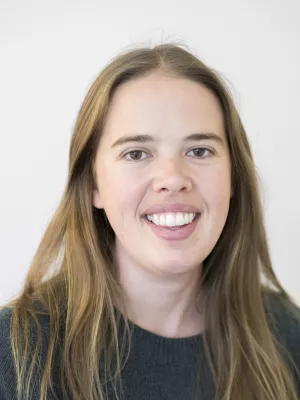
Julia Kelly
Postdoc

Carbon exchange in boreal ecosystems: upscaling and the impacts of natural disturbances
Author
Summary, in English
Paper I and II tested the opportunities and limitations offered by newly available, miniaturized thermal cameras, which can capture images of surface temperature at sub-decimeter resolution. Since temperature is one of the most important factors driving ER, these cameras provide an opportunity to map ER in unprecedented detail. In Paper III, satellite land surface temperature (LST) data was used to model ER across several Nordic peatland sites to examine whether remote sensing models can capture variations in ER between sites. In addition, Paper II and III highlighted the impacts of the extreme 2018 drought that affected large parts of Europe on peatland CO2 fluxes. The drought also led to a severe wildfire season in Sweden and Paper IV investigated how the effects of fire on forest soils depended on burn severity, salvage-logging and stand age.
Producing reliable surface temperature measurements from miniaturized thermal cameras requires careful data collection and processing and one of the main outcomes of this thesis is a set of best practices for thermal camera users. Despite including larger uncertainties than traditional soil or air temperature measurements, thermal data from these cameras is suitable for modeling ER in peatland ecosystems. The ER maps that can be produced using UAV thermal cameras offer a unique resource for evaluating how ER varies within a flux tower footprint and could reveal potential biases in flux tower measurements. Indeed, this thesis demonstrated that there is substantial spatial variation in ER, both within and between peatlands. Vegetation composition played a significant role in driving this spatial variation as well as the response of peatlands to drought. Nevertheless, using only LST and the Enhanced Vegetation Index (EVI2) as model inputs captured a large proportion of the variability of daily ER across multiple peatlands. With further developments, such a modeling approach could represent a simple and effective way of estimating peatland ER across Scandinavia. In terms of wildfire impacts on boreal forest soils, stand age had a significant impact on soil respiration, nutrient availability and microclimate, whereas salvage-logging did not, in the first year after fire. Furthermore, the effects of drought and wildfire on ER depended on their severity, but during both extreme water stress in peatlands and after severe burning in forests, ER decreased. It is important that this negative feedback is accounted for in ER models to avoid overestimating carbon loss from northern ecosystems in response to disturbances and climate change.
Department/s
- Centre for Environmental and Climate Science (CEC)
- BECC: Biodiversity and Ecosystem services in a Changing Climate
- MERGE: ModElling the Regional and Global Earth system
Publishing year
2021-02-12
Language
English
Full text
Document type
Dissertation
Publisher
Lund University
Topic
- Environmental Sciences
- Physical Geography
- Climate Research
Keywords
- Carbon fluxes
- CH4
- Climate change
- CO2
- Drought
- Ecosystem respiration
- Forest
- Peatland
- Remote sensing
- Temperature
- Thermal camera
- UAV
- Wildfire
Status
Published
Project
- GREEN GAP: GREENhouse GAs flux uPscaling - improved understanding of key ecosystem processes using remote sensing and ground-based measurements
Supervisor
- Natascha Kljun
- Lars Eklundh
- Xianghua Xie
ISBN/ISSN/Other
- ISBN: 978-91-7895-724-8
- ISBN: 978-91-7895-723-1
Defence date
10 March 2021
Defence time
14:00
Defence place
Blå Hallen, Ekologihuset, Biologiska institutionen, Lund. Join via zoom: https://lu-se.zoom.us/meeting/register/u5Ascu2tqDosE9dTksqtkuaE88KummYRwYMi
Opponent
- Nigel Roulet (Professor)